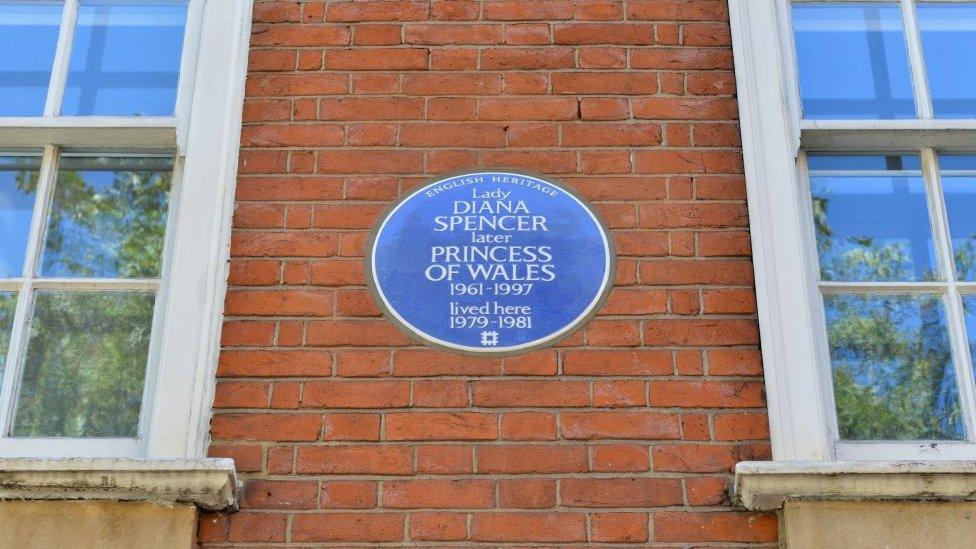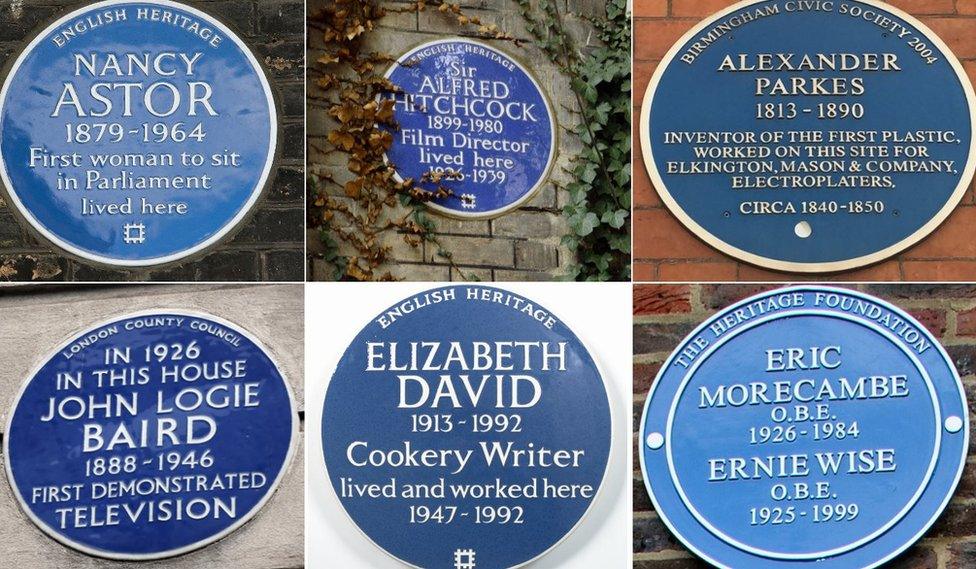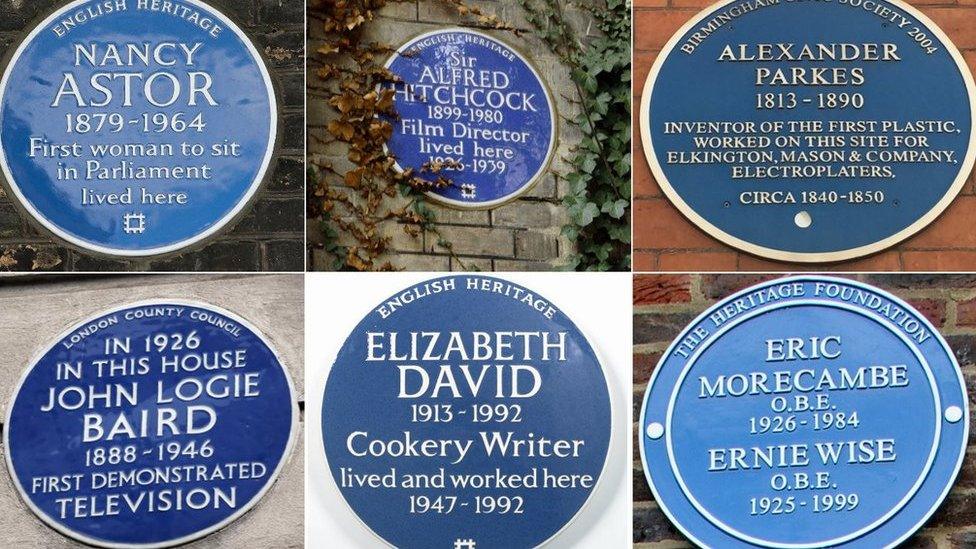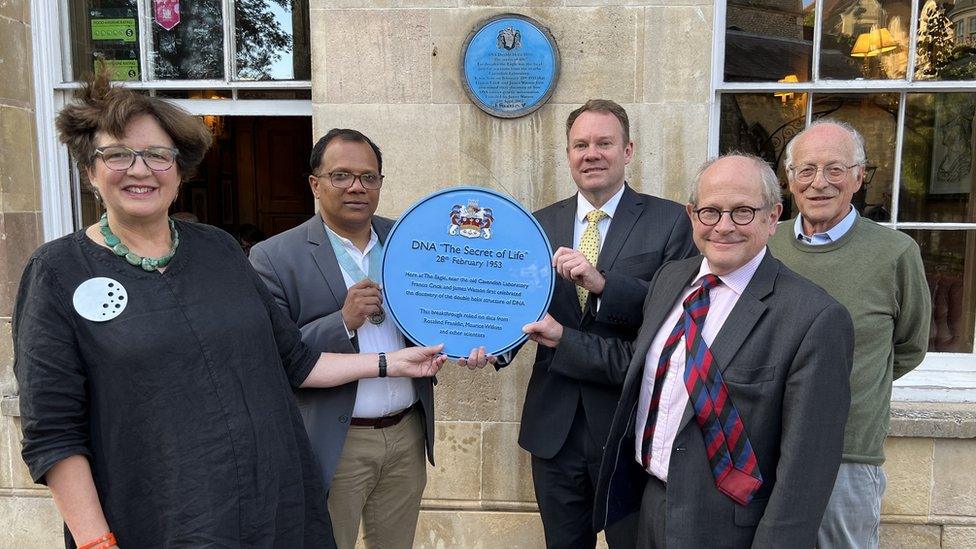Blue plaques: Official English Heritage scheme could expand across England
- Published

A blue plaque honouring Diana, Princess of Wales, at her former London flat was put up in 2021
The official blue plaque scheme celebrating notable historical figures could be expanded beyond London to cover all of England.
The government is suggesting a single nationwide system for blue plaques, which are put up on buildings linked to famous people, should be put in place.
The London scheme run by English Heritage began more than 150 years ago.
But the idea has since been copied all over the UK, and councils and heritage groups now run local programmes.
The government's arts and heritage minister Lord Parkinson said London's blue plaques were "world-renowned".
"People everywhere should be able to celebrate the figures who have shaped their community - which is why we are seeking to extend this opportunity across the country, to allow people and buildings from anywhere in England to be nominated," he said.
An amendment has been tabled to the government's Levelling Up and Regeneration Bill - which will be debated in the House of Lords - to change the way the current London blue plaque system works.
There are more than 1,000 blue plaques in London, with English Heritage in charge of strict rules over who gets one.
Recipients must have been dead for at least 20 years and must have lived at the location they are being connected with for either a long time or during an important period, such as when writing a seminal work or creating a key invention.
English Heritage did trial a national scheme in the early 2000s, but said it found that much of the ground had already been covered, so it decided to keep to just London.
But blue plaques organised by other groups are regularly put up on buildings all over the UK. In the summer, plaques were put up to honour former England footballer Richard Pym in Topsham, Devon as well as one of the UK's most distinguished stained-glass artists, Margaret Rope, in Woodbridge, Suffolk.
The plates are sometimes altered, such as the one at a Cambridge pub that last week changed its blue plaque to also recognise the work of a lesser-known female scientist who had helped discover the structure of DNA.
But, with no national body governing the plaques, the criteria used to determine who and where gets a plaque vary widely from place to place.
Some areas have given plaques for more fleeting visits from famous people, for example a plaque in Norwich that marks the day in 1971 when Muhammad Ali visited a supermarket as part of a promotional tour by Ovaltine.

There are thousands of heritage plaques installed by hundreds of different organisations across the country
The Department for Culture, Media and Sport is suggesting Historic England - the public body funded by the government - should run the scheme across England, while English Heritage will continue to deliver it in London.
"In developing a national blue plaques scheme that will celebrate heritage across England, we want to help people feel a stronger connection to the history all around us and shine a light on the people and places of the past which have made us who we are," said the boss of Historic England, Duncan Wilson.
The government said the planned change to the scheme was a chance for people to research local history and nominate their own community figures.
- Published29 May 2016

- Published31 August 2023

- Published19 August 2022
